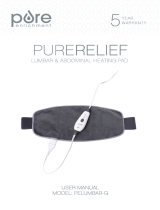
If you need service or assistance,
we suggest you follow these four steps:
l. Before calling
assistance...
for
Performance problems often result
from little things you can find and fix
yourself without tools of any kind.
If your washer does not fill:
l
Is the power supply cord plugged
into a live circuit with the proper
voltage?
l
Are both water faucets open?
l
Have you checked your home’s
main fuses or circuit breaker box?
l
Are the water supply hoses kinked?
l
Is the Cycle Control Knob set and
pulled out?
l
Is Selector Switch set in the WASHER
position?
It your washer does not spin:
l
Is the lid closed?
l
Is the power supply cord plugged
into a live circuit with the proper
voltage?
l
Have you checked your home’s
main fuses or circuit breaker box?
If Your washer drains at the wrong
time:
l
The drain hose should be at least 28
inches above the floor and secured
l
The drain hose should not fittight-
ly in the drain pipe.
l
Make sure that the Cycle Control
Knob is pointing to a number in the
cycle.
Make sure the drain hose is higher
than the water level in the washer. If
it isn’t...
l
The washer may seem to be drain-
ing during wash and rinse cycles.
l
Water can siphon out. (See “lnstalla-
tion Instructions!‘)
If your washer stops during the per-
manent press cycle:
l
Remember, the washer will stop for
about 2 minutes after the
partial
drain during the cool-down period
in this cycle.
If your dryer does not run or heat:
l
Is the power supply cord plugged
into a live circuit with the proper
voltage?
l
Is the door closed tightly?
l
Did you push START?
l
Have you checked your home’s
main fuses or circuit breaker box?
l
The AIR setting is without heat.
l
The last minutes of heat settings
are wlthout heat. See page 12.
l
Is Selector Switch set in the DRYER
position?
If drying times seem too long:
l
Is the lint screen clean?
l
Is the room cold?
l
See page 13 of this book and page
19 of your “Laundry Guide:’




















